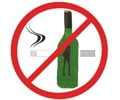Young or confused people and those dependent on alcohol could be at risk from ingestion of alcohol hand rubs in hospitals or care homes, warn doctors in this week’s BMJ.
They recommend that large hand rub dispensers are placed in secure holders to prevent accidental or intentional removal of the container by high risk patients.Healthcare acquired infections are common and alcohol hand rubs are an important component of good hand hygiene, along with other measures (such as rolling up sleeves, minimal jewellery, and removal of wrist watches) to try and reduce healthcare acquired infections. Since April 2005, near patient alcohol-based hand rubs (e.g. attached to bedsides and entrances to wards) have been widely available in NHS hospitals, but no risk assessment has been undertaken involving their accidental or intentional ingestion.
Toxicologists at Guy’s and St Thomas’ NHS Foundation Trust Poisons Unit compared the number of enquiries to their poisons centre in London from other health professionals during the 16-month periods before and after the widespread introduction of alcohol hand rub. These enquiries related to both children and adults exposed to the rub (both ingestion and eye exposure).
This comparison revealed an increase in the total number (23 versus 50) of enquiries to the unit. There was also a marked increase (7 versus 29) in adult ingestion numbers, 19 of which were thought to be due to intentional ingestion.
All cases of ingestion occurred within hospitals or care homes.
Accidental ingestion occurred in the very young, elderly and where patients were confused, while intentional ingestion only occurred in those with alcohol dependency.
Advertisement
In our experience, they say, the more serious effects are seen in those who ingest more than 500ml of hand-rub and this is most likely to occur in the confused (e.g. mistaking it for water) and those with alcohol dependency seeking the desired effect.
Advertisement
They suggest that in areas that are easily accessible by high risk patients, the larger hand rub dispensers (500ml or more) could be placed within locked secured holders preventing accidental or intentional withdrawal of the container and ingestion.
They conclude that to tackle the relative risks associated with alcohol hand rub ingestion, balanced against the benefits and importance of them in reducing healthcare acquired infection, there needs to be a multidisciplinary and coordinated approach from risk managers, toxicologists and infection control specialists.
Source-BMJ
KAR/P











